Tracking links are like GPS for your marketing.
Without them, you’re driving blind, sharing links but never really knowing where your visitors came from or what’s working.
The good news? You don’t need paid software or a complicated setup to start.
In just a few minutes, you can build, shorten, and track links for free.
In this guide, we’ll walk through beginner-friendly steps to create free tracking links that help you understand your audience and improve your campaigns.
You’ll see exactly how to use tools like Linko’s free UTM builder and free link shortener to create clean, trackable URLs without any technical headaches.
What Are Tracking Links and Why They Matter
A tracking link is a regular URL with extra data attached so you can measure clicks and identify where your visitors come from.
This data helps you figure out which ads, emails, or social media posts are driving traffic.
Think of it like adding a return address to a letter, so you know exactly where the response came from.
Without tracking, all your visitors are just “website traffic” with no source attached. 😒
How Tracking URLs Work Behind the Scenes
When you add special tags like UTM parameters to a link, they don’t change the page visitors land on.
Instead, these tags send extra information to analytics tools like Google Analytics or your link tracking dashboard.
For example:
https://yourwebsite.com/?utm_source=facebook&utm_medium=social&utm_campaign=spring-saleWhen someone clicks this link, your analytics can tell:
- They came from Facebook
- The link was part of a social campaign
- The campaign name was spring-sale
This behind-the-scenes data lets you compare performance between different channels.
Examples of Tracking Links in Real Campaigns
- E-commerce store adding tracking to Instagram story swipe-up links to see which product launches get the most clicks.
- Blogger tracking which guest post referrals send the most readers to their site.
- YouTuber adding tracking to video descriptions to measure how many viewers click on affiliate links.
With tracking links, you’re not guessing, instead you’re making data-backed decisions.
Step 1: Understand the Basics of Creating Tracking URLs
Before building your first tracking link, it’s worth knowing what goes into it.
A tracking URL is made up of your original link plus one or more parameters that send information about the click.
UTM Parameters and What They Do
UTM stands for Urchin Tracking Module, a fancy term for the tags you add to a link.
The main ones are:
- utm_source – where the traffic comes from (e.g., facebook, newsletter, google)
- utm_medium – the type of traffic (e.g., social, email, cpc)
- utm_campaign – the name of your marketing campaign (e.g., summer_sale, new_product)
- utm_term – optional; used for paid keyword tracking
- utm_content – optional; used to differentiate similar links in the same campaign
These tags turn a plain URL into one that tells you the exact origin of your visitors.
Key Elements Every Tracking Link Should Have
A good tracking link is:
- Descriptive – clear parameters so you instantly know the source
- Consistent – same naming rules across campaigns
- Clean – no typos or random characters
- Functional – tested before you share it
Getting these basics right keeps your tracking data accurate and easy to read.
Step 2: Use a Free UTM Builder to Create Tracking Links
Manually adding UTM parameters can be tedious and prone to errors.
That’s where a free UTM tag builder tool comes in.
It gives you fields to fill in source, medium, campaign name, and automatically creates your full tracking URL.
This approach saves time, prevents typos, and ensures your parameters are formatted correctly.
Adding Campaign Source, Medium, and Name
When filling in your UTM builder:
- Source – the platform sending traffic (facebook, twitter, newsletter)
- Medium – how the link is delivered (social, email, banner)
- Campaign – the identifier for the promotion (black_friday, ebook_launch)
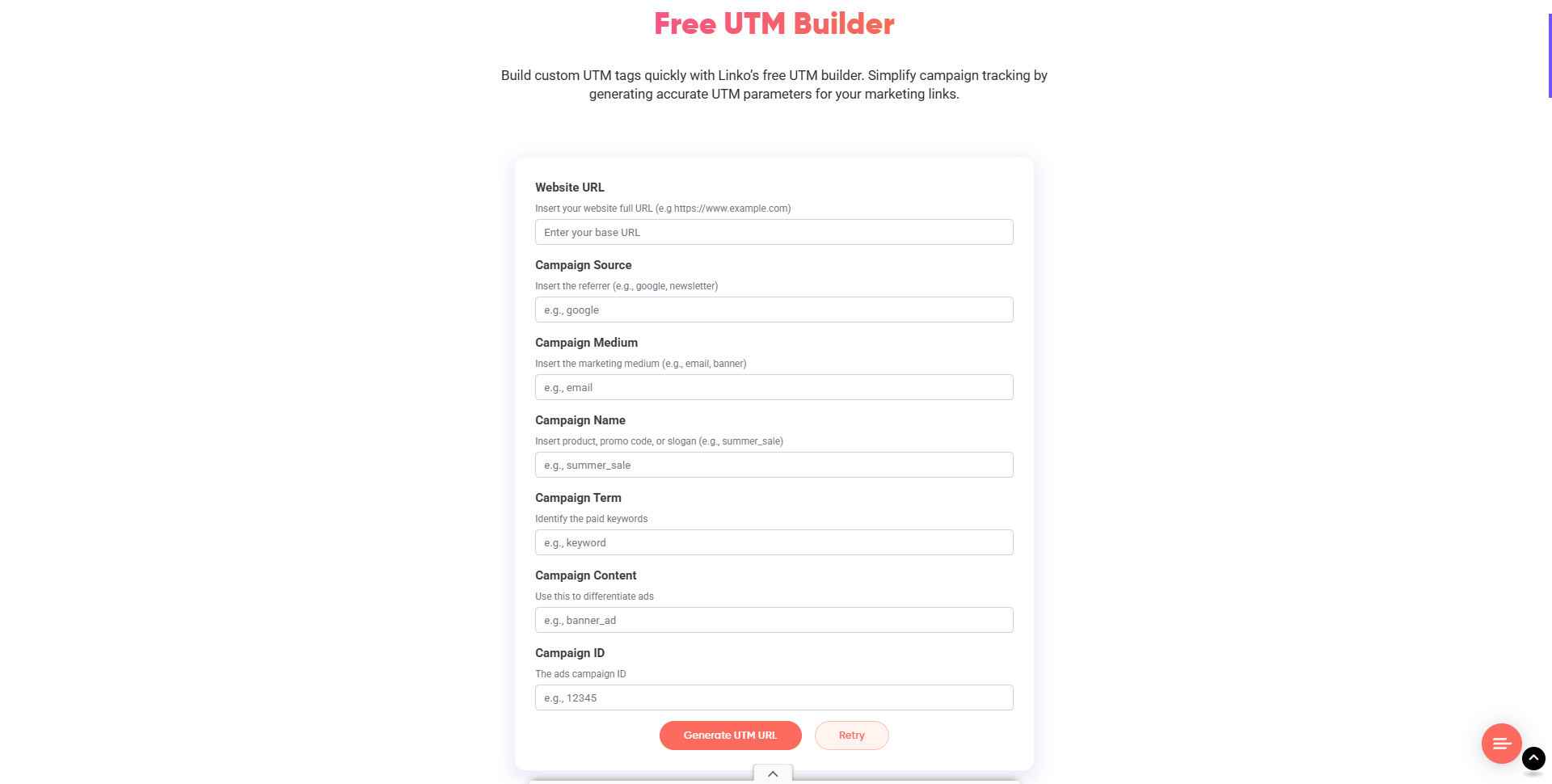
For example, if you’re promoting a blog post on Twitter, your parameters might be:
- Source: twitter
- Medium: social
- Campaign: blog_promo
Your final URL will look something like:
https://yourwebsite.com/blog-post?utm_source=twitter&utm_medium=social&utm_campaign=blog_promoHow to Avoid Mistakes in UTM Tagging
Common pitfalls to avoid:
- Using inconsistent naming (e.g., Facebook vs facebook) – stick to lowercase.
- Adding unnecessary parameters that clutter your data.
- Forgetting to test your link to ensure it works as expected.
Using the same naming style every time will keep your reports clean and easy to filter.
Step 3: Shorten Your Tracking URL for Easier Sharing
A long tracking link looks messy, especially on social media or printed materials. Shortening it makes it look clean and clickable while still keeping the tracking intact.
Why Short Links Work Better Than Long Links
- Better presentation – neat and professional in posts, emails, or SMS.
- Higher click-through rates – people are more likely to click a clean link.
- Easier to remember – especially useful for offline campaigns.
Plus, short links are easier to share in places with character limits, like X (Twitter).
How to Use Linko’s Free Link Shortener
With Linko’s free shortener, you can:
- Paste your long tracking URL into the tool.
- Get a clean, short link instantly.
- Share it anywhere while still tracking every click.

You don’t even need an account to shorten a link, but if you sign up, you can store and manage them in one place.
Step 4: Create Tracking Links Inside a Link Management Account
While shortening links is helpful, having an account on a link management platform gives you more control and insights.
Benefits of Tracking Clicks in Your Linko Dashboard
- Click analytics – see exactly how many clicks each link gets.
- Traffic sources – find out where your visitors are coming from.
- Link organization – manage multiple campaigns from one dashboard.
This is especially helpful if you run ads, send emails, and post on multiple social platforms, you’ll know exactly which ones bring results.
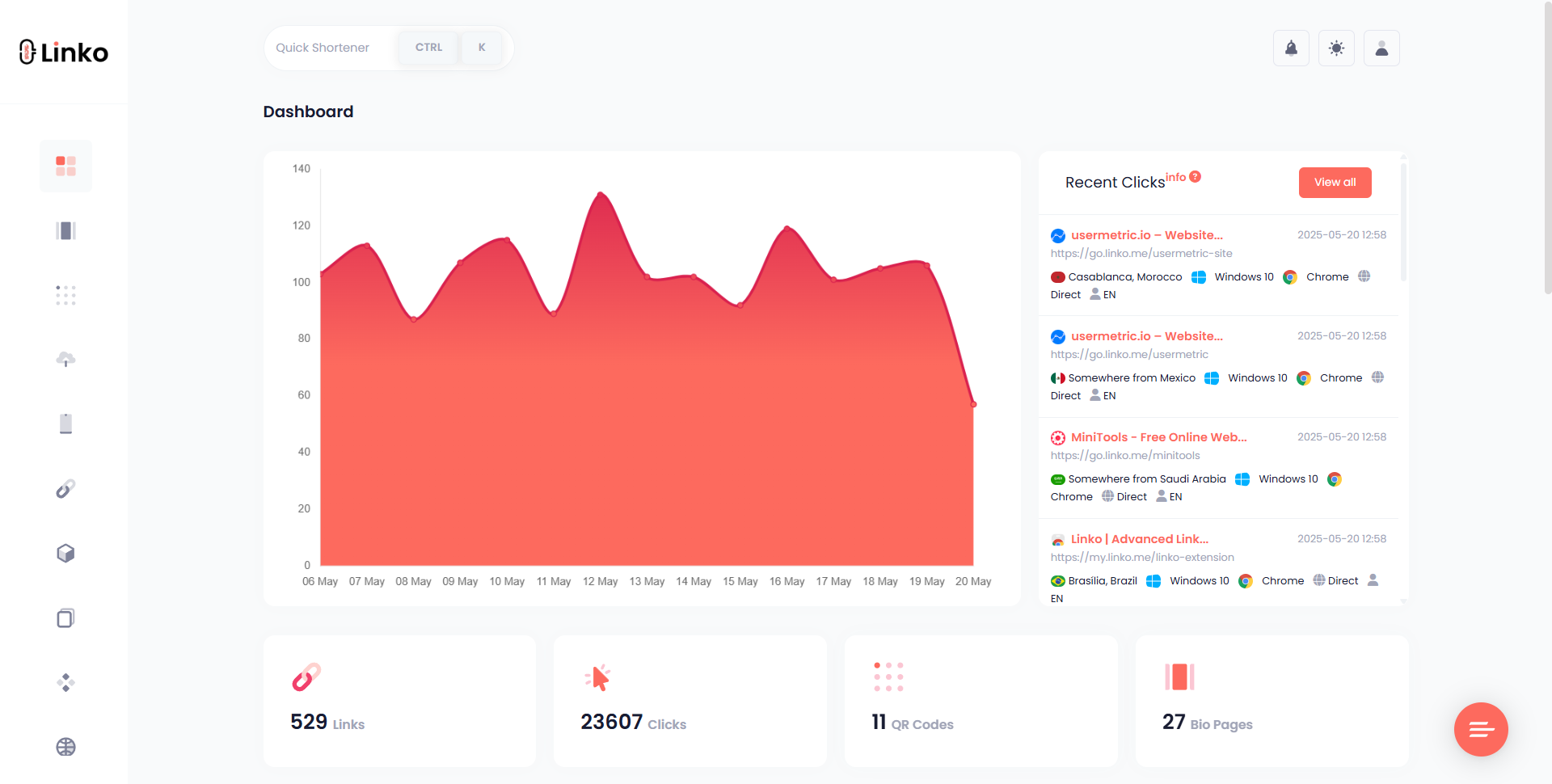
Free Plan Limits and How to Get Started
On the free plan, you can:
- Create 50 short links.
- Track up to 1,000 clicks.
- View analytics for each link.
To start, sign up for a free account, shorten your tracking link, and share it. The dashboard will automatically log and display click data.
Step 5: Track Clicks and Analyze Link Performance
Creating a tracking URL is just the beginning.
The real value comes when you review the data it collects.
By tracking clicks and studying performance, you can see which campaigns are driving results and which ones need improvement.
Understanding Click Reports and Traffic Sources
A good link tracking tool, like Linko, shows more than just total clicks. You’ll see:
- Traffic sources – which platforms or channels people clicked from.
- Geographic data – where your visitors are located.
- Device type – whether they used mobile, desktop, or tablet.
This breakdown is powerful.
For example, if you find most clicks come from mobile users on Facebook, you can focus on mobile-friendly landing pages and ad formats.
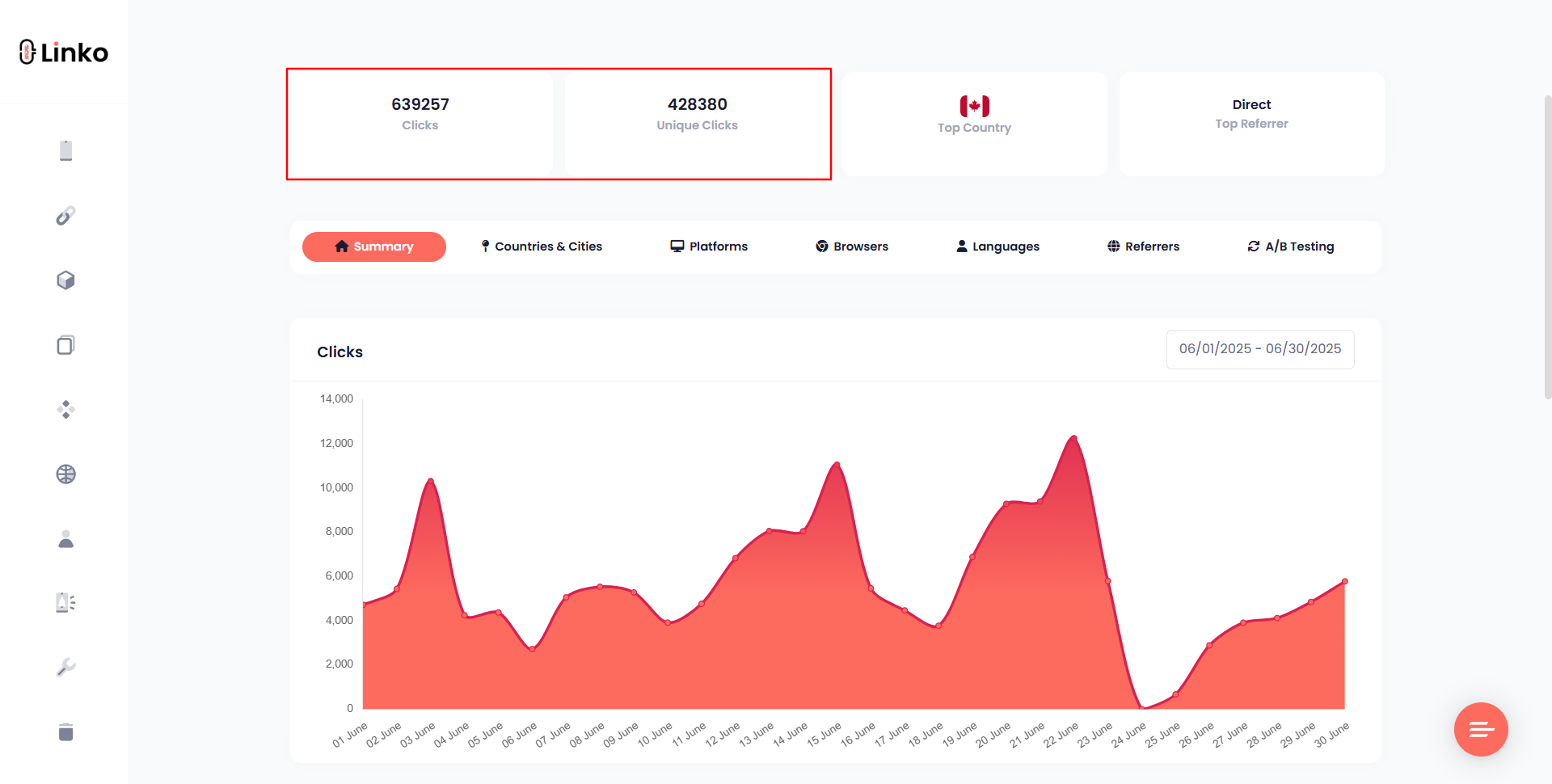
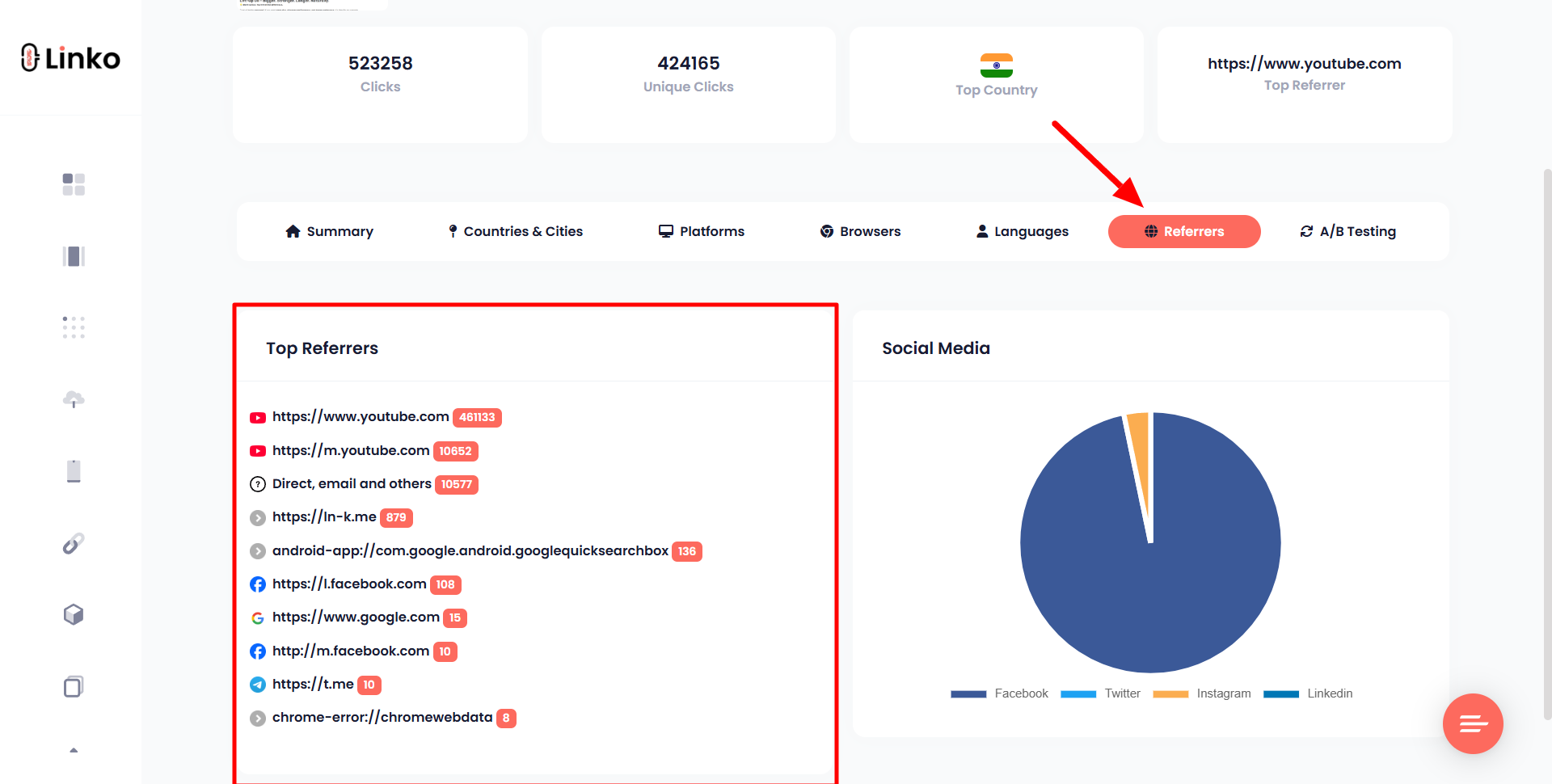
Identifying Top-Performing Campaign Links
When you compare multiple links, patterns emerge. You’ll notice that certain campaigns generate higher engagement than others. This allows you to:
- Shift budget or effort to channels that work best.
- Reuse messaging or creatives from winning campaigns.
- Stop wasting time on underperforming sources.
Think of this as your campaign scoreboard, it keeps you informed and competitive.
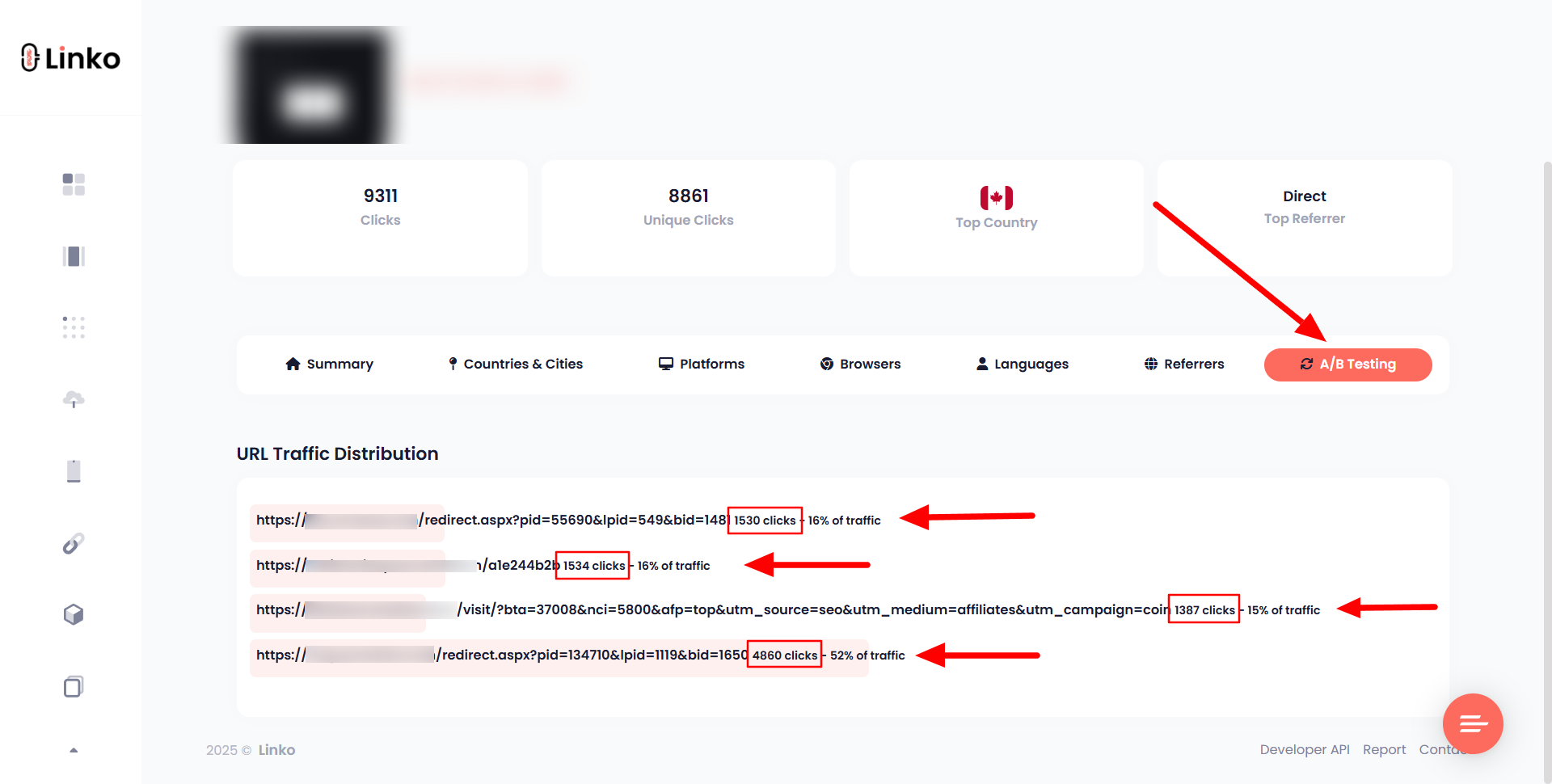
Step 6: Organize and Manage Multiple Tracking URLs
As your marketing grows, so does the number of tracking links you manage. Without a system, it’s easy to lose track and mix up results.
Campaign Naming Strategies for Better Management
The way you name your campaigns can make or break your tracking clarity. A good naming format should be:
- Consistent – use lowercase, underscores, or hyphens for all parameters.
- Descriptive – include platform, promotion type, and date if needed.
- Easy to filter – make sure your analytics tool can sort by campaign names.
Example:
utm_source=facebook&utm_medium=social&utm_campaign=summer_sale_2025Instead of vague names like “test” or “promo1,” this format instantly tells you where the traffic came from and what it relates to.
Keeping Links Updated Without Breaking Tracking
Sometimes you need to change the destination URL, maybe you updated a landing page or switched product links.
With a link management account, you can edit the destination without changing the short link itself. This way, your tracking stays intact, and you don’t lose historical data.
Step 7: Test and Improve Your Tracking Strategy
Even with the right setup, tracking isn’t a one-time task. It’s an ongoing process of testing, measuring, and refining.
Spotting Errors in Tracking Data
Errors happen when:
- Links are missing parameters.
- Naming conventions are inconsistent.
- The wrong URL was shared.
A quick weekly review of your campaign links can catch these mistakes early.
Linko’s link management makes this easier because you can see all your short links and their performance in one place.
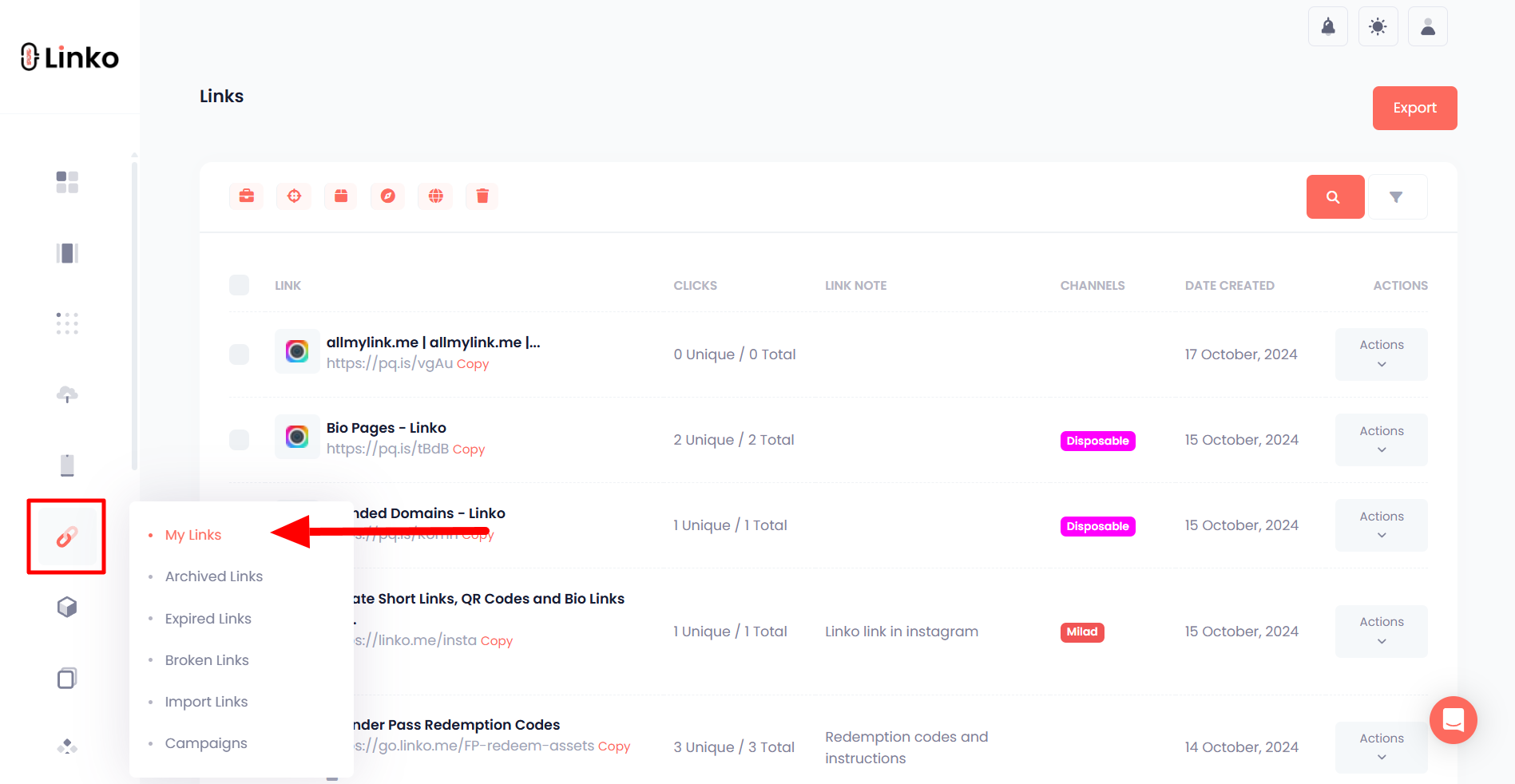
Making Adjustments for Higher Accuracy
If you notice that one channel’s clicks aren’t tracking correctly, adjust the parameters and re-share the correct link.
Over time, small refinements in your tracking process lead to cleaner, more reliable reports.
This step is what turns “just tracking” into data you can confidently act on.
Common Mistakes to Avoid When Creating Tracking Links
Even experienced marketers slip up, but beginners tend to hit the same roadblocks. Avoid these to keep your data accurate and useful:
- Using inconsistent names – “
Facebook” vs “facebook” will split your data. - Overcomplicating parameters – adding unnecessary tags can confuse reports.
- Not testing before sharing – always click the link to ensure it works.
- Forgetting to shorten long URLs – messy links can discourage clicks.
- Creating duplicate tracking links – this scatters your data and makes analysis harder.
Being intentional and organized from the start will save you headaches later.
Final Thoughts
Creating free tracking links isn’t just about adding tags to a URL, it’s about building a clear picture of where your traffic comes from and how it behaves.
With tools like a free UTM builder, shortener and tracking dashboard, you can set up professional-grade tracking without spending a cent.
Start with one campaign, track it well, and learn from the data. As you grow, your ability to organize and optimize links will directly impact your marketing results.
Remember, every click tells a story. Your tracking links make sure you hear it.
FAQs
What is the difference between a tracking link and a normal link?
A normal link just sends visitors to a page. A tracking link adds parameters that record details about the click, such as the source, medium, and campaign.
Do I need to pay to create tracking URLs?
No. With free tools like Linko’s shortener and UTM builder, you can create and manage tracking links without paying.
Can I track clicks without shortening my links?
Yes, but shortening makes them cleaner, easier to share, and more clickable. A short link also allows you to change destinations without losing data.
How many tracking links can I create with Linko’s free plan?
You can create up to 50 short links and track up to 1,000 clicks per month at no cost.
What if I make a mistake in my tracking parameters?
You’ll need to update the link with the correct parameters and re-share it. Consistent naming conventions help prevent these errors.
Can I use UTM tags on links within my own website?
No. UTM tagging internal links can confuse analytics tools and skew session tracking. Keep UTM codes limited to external campaign links like emails, ads, or social posts.
Do UTM parameters affect how cookies or analytics tools attribute traffic?
No. UTM tags are unaffected by cookie preferences and work reliably even when tracking via pixels or cookies is limited. They help marketing tools attribute traffic more accurately.
What happens if I need to update a destination URL after sharing a tracking link?
With a link management tool like Linko, you can update the destination without altering the short tracking link. This preserves historical data and tracking continuity.
Why should I avoid UTM parameters on internal site navigation?
UTMs should only tag outbound campaign links. Adding them to internal links breaks tracking logic and misrepresents visitor flow. Tools like Google Analytics automatically track internal behavior without UTMs.
How many UTM tags are actually necessary?
Only the essential ones: source, medium, and campaign. The others, term and content are optional and only needed for deeper detail or A/B testing.

Comments